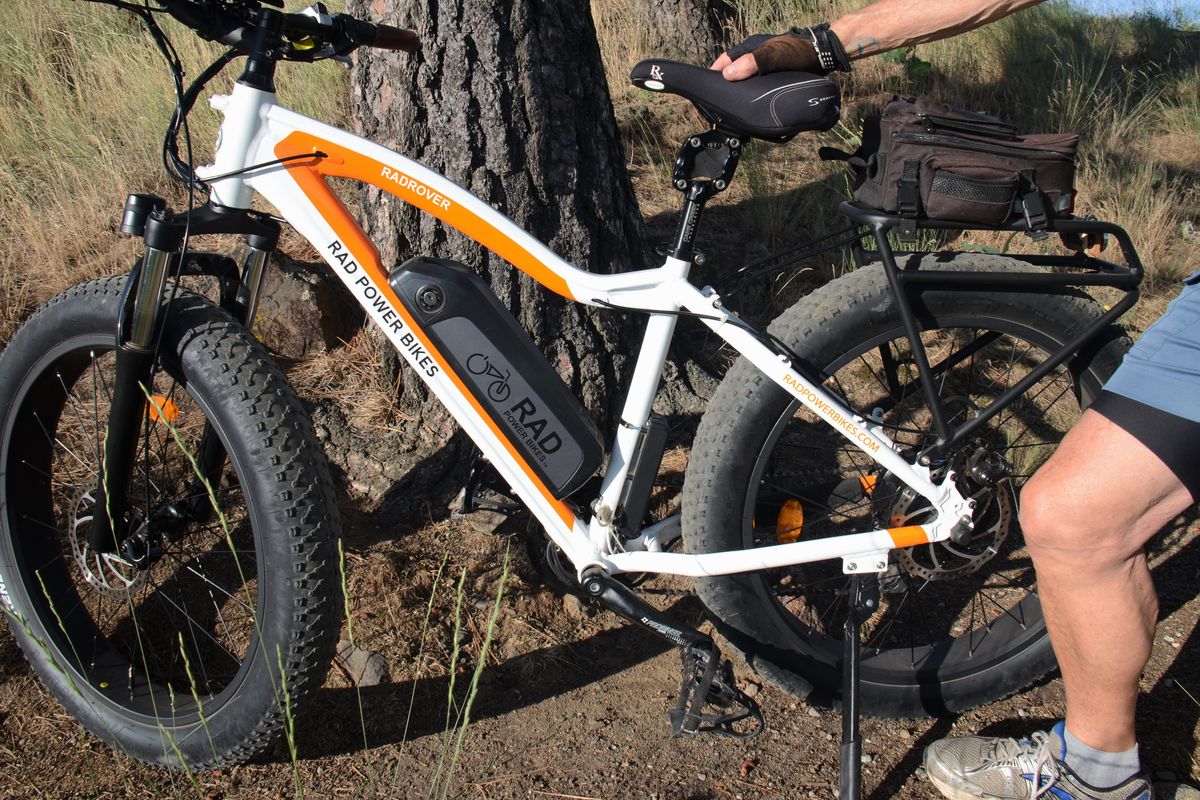Catching up to e-bikes: Riders and trail managers respond to speed and ease of high-tech pedaling

What’s an aging cyclist to do when the hills get too long and steep – even if it is the same hill as it was 25 years ago?
I’ll be 79 next month. I have biked since I was a kid, but I advanced into another level of riding about 30 years ago when I discovered mountain biking. The wider tires and lower gearing opened the door to riding a new world of dirt roads and trails that I could continue to do with my kids who were high school age. Now I’m ready to embrace another step in my evolution as a pedal pusher.
Technology has answered my longing for a way to continue riding the hills and trails I was beginning to miss as I got older and found myself getting left behind. The revolution and evolution of electric bikes, or e-bikes for short, has created tiny battery-powered motors to transform two- and three-wheeled bikes into hill-taming steeds.
My new electric-assist bike has enabled me to get back on some of my favorite roads, pathways and trails, still pedaling well enough to get the heart and lungs fully functioning, but pulling some of the hills I haven’t done for a few years.
Thanks to the increasing acceptance of mountain bikes in the last couple decades, there are many new trails for me to explore. My e-bike allows me to ride greater distances on dirt or hard surfaces in less time. Depending on the terrain and how much power assist I need, I can get about 45 miles to a charge.
While thousands of other riders are equally smitten with the fountain of youth an e-bike serves to aging legs, there’s a learning curve to operating these “vehicles,” including knowing where they are and aren’t allowed.
E-bikes, like so many other mechanical devices capable of carrying a person, are saddled with some regulations. It’s helpful to understand the variations in federal, state and local rules to know not only where they can be legally ridden, but also which e-bike to buy.
E-bikes are defined in Washington and Idaho regulations as follows:
- CLASS 1: An e-bike equipped with a battery-powered motor that provides assistance only when the rider is pedaling and that ceases providing assistance when the e-bike reaches 20 mph.
- CLASS 2: An e-bike equipped with a battery-powered, throttle-actuated motor that ceases providing assistance when the e-bike reaches 20 mph.
- CLASS 3: An e-bike equipped with a battery-powered motor that provides assistance only when the rider is pedaling and that ceases providing assistance when the e-bike reaches 28 mph.
Note that classes 1 and 3 are the same except for the top speed when pedaling. Class 2 bikes are distinctly different in that they have a throttle, typically a handlebar-located “twist” throttle associated with one of the handgrips. A further distinction of class 2 is that you can just sit, not pedal, and use the throttle to propel yourself.
E-bikes are subject to all the same laws as regular bikes except that, depending upon the e-bike class, there may be restrictions regarding where various classes are permitted on certain pathways.
Federal laws apply to federal lands. Washington and Idaho state laws lay out general parameters, but defer details and exceptions to local regulations.
However, many local jurisdictions don’t have laws specifically addressing e-bikes or they are in the process of adopting local rules. In some cases they are in the process of changing their previously adopted regulations. The rapidly increasing availability and use of steadily improving e-bikes is forcing road and trail managers to constantly reevaluate and change the laws.
Plan ahead for riding and transporting e-bikes, which can be twice as heavy as a similar-style standard bicycle. E-bikes range from 55 to 80 pounds depending on how they are equipped. With the added weight they coast downhill much faster and controlling and braking can be challenging, particularly on dirt tracks.
Since e-bikes can get you farther afield, have a plan for dealing with the beefy frame in the case of a breakdown or discharged battery.
Also, the added weight means the existing bike rack for your car may not be stout enough for this weight. Even if the rack is rated for this weight, lifting an e-bike onto the rack can be challenging! Racks specifically intended for e-bikes cost several hundred dollars.
Increased speed is a concern for riding e-bikes as well as managing them. Drivers of cars are accustomed to dealing with bicycles averaging 8-12 mph. Typical e-bikes on a street can be traveling 20-30 mph and therefore they can catch vehicle drivers off-guard causing them to sometimes misjudge the speed of an approaching e-bike.
E-bikers also must learn to limit their speed on shared trails out of courtesy as well as for the safety of other types of users. Responsible riding could head off future restrictions.
Coupled with my love for RVing, I have been fortunate to mountain bike in 22 states, as well as in Mexico and eight Canadian provinces. From that perspective, I’ve come to appreciate the great road riding and mountain biking in the Spokane and North Idaho region. And as a septuagenarian, I can appreciate them even more on an e-bike.